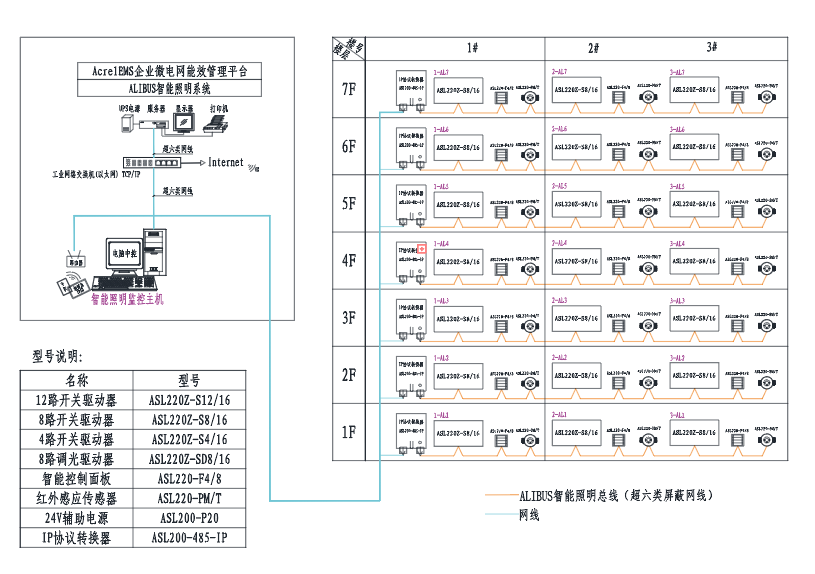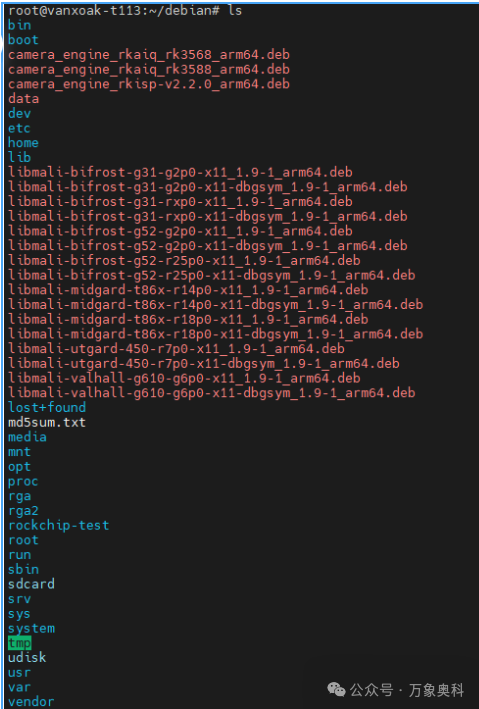点击蓝字 ╳ 关注我们
蒋卫峰
深圳开鸿数字产业发展有限公司
OS内核开发工程师
一、 procfs介绍



二、 procfs文件系统的设计
struct Vnode {
enum VnodeType type; /* Vnode节点类型 */
int useCount; /* 节点链接数 */
uint32_t hash; /* 哈希值 */
uint uid; /* 文件拥有者的user id */
uint gid; /* 文件群组id */
mode_t mode; /* 文件读写执行权限 */
LIST_HEAD parentPathCaches; /* 指向父节点的路径缓存 */
LIST_HEAD childPathCaches; /* 指向儿子节点的路径缓存 */
struct Vnode *parent; /* vnode父节点 */
struct VnodeOps *vop; /* vnode操作接口 */
struct file_operations_vfs *fop; /* 文件操作接口,即指定文件系统 */
void *data; /* 数据,指向内部数据的指针 */
uint32_t flag; /* 节点标签 */
LIST_ENTRY hashEntry; /* 挂入v_vnodeHashEntry[i]中 */
LIST_ENTRY actFreeEntry; /* 通过本节点挂载到空闲和使用链表中 */
struct Mount *originMount; /* 所在文件系统挂载信息 */
struct Mount *newMount; /* 其他挂载在这个节点中的文件系统信息 */
char *filePath; /* Vnode的路径信息 */
struct page_mapping mapping; /* page mapping of the vnode */
};
struct VnodeOps {
int (*Create)(struct Vnode *parent, const char *name, int mode, struct Vnode **vnode);// 创建节点
int (*Lookup)(struct Vnode *parent, const char *name, int len, struct Vnode **vnode);// 查询节点
int (*Open)(struct Vnode *vnode, int fd, int mode, int flags);// 打开节点
ssize_t (*ReadPage)(struct Vnode *vnode, char *buffer, off_t pos);
ssize_t (*WritePage)(struct Vnode *vnode, char *buffer, off_t pos, size_t buflen);
int (*Close)(struct Vnode *vnode);// 关闭节点
int (*Reclaim)(struct Vnode *vnode);// 回收节点
int (*Unlink)(struct Vnode *parent, struct Vnode *vnode, const char *fileName);// 取消硬链接
int (*Rmdir)(struct Vnode *parent, struct Vnode *vnode, const char *dirName);// 删除目录节点
int (*Mkdir)(struct Vnode *parent, const char *dirName, mode_t mode, struct Vnode **vnode);// 创建目录节点
int (*Readdir)(struct Vnode *vnode, struct fs_dirent_s *dir);// 读目录节点信息
int (*Opendir)(struct Vnode *vnode, struct fs_dirent_s *dir);// 打开目录节点
int (*Rewinddir)(struct Vnode *vnode, struct fs_dirent_s *dir);// 定位目录节点
int (*Closedir)(struct Vnode *vnode, struct fs_dirent_s *dir);// 关闭目录节点
int (*Getattr)(struct Vnode *vnode, struct stat *st);// 获取节点属性
int (*Setattr)(struct Vnode *vnode, struct stat *st);// 设置节点属性
int (*Chattr)(struct Vnode *vnode, struct IATTR *attr);// 改变节点属性
int (*Rename)(struct Vnode *src, struct Vnode *dstParent, const char *srcName, const char *dstName);
int (*Truncate)(struct Vnode *vnode, off_t len);// 缩小或扩大
int (*Truncate64)(struct Vnode *vnode, off64_t len);
int (*Fscheck)(struct Vnode *vnode, struct fs_dirent_s *dir);
int (*Link)(struct Vnode *src, struct Vnode *dstParent, struct Vnode **dst, const char *dstName);
int (*Symlink)(struct Vnode *parentVnode, struct Vnode **newVnode, const char *path, const char *target);
ssize_t (*Readlink)(struct Vnode *vnode, char *buffer, size_t bufLen);
};int VnodesInit(void)
{
int retval = LOS_MuxInit(&g_vnodeMux, NULL);
if (retval != LOS_OK) {
PRINT_ERR("Create mutex for vnode fail, status: %d", retval);
return retval;
}
LOS_ListInit(&g_vnodeFreeList);
LOS_ListInit(&g_vnodeVirtualList);
LOS_ListInit(&g_vnodeActiveList);
retval = VnodeAlloc(NULL, &g_rootVnode);
if (retval != LOS_OK) {
PRINT_ERR("VnodeInit failed error %d
", retval);
return retval;
}
g_rootVnode->mode = S_IRWXU | S_IRWXG | S_IRWXO | S_IFDIR;
g_rootVnode->type = VNODE_TYPE_DIR;
g_rootVnode->filePath = "/";
return LOS_OK;
}struct Mount {
LIST_ENTRY mountList; /* 全局Mount链表 */
const struct MountOps *ops; /* Mount的功能函数 */
struct Vnode *vnodeBeCovered; /* 要被挂载的节点 */
struct Vnode *vnodeCovered; /* 要挂载的节点 */
struct Vnode *vnodeDev; /* 设备vnode */
LIST_HEAD vnodeList; /* Vnode表的表头 */
int vnodeSize; /* Vnode表的节点数量 */
LIST_HEAD activeVnodeList; /* 激活的节点链表 */
int activeVnodeSize; /* 激活的节点数量 */
void *data; /* 数据,指向内部数据的指针 */
uint32_t hashseed; /* Random seed for vfshash */
unsigned long mountFlags; /* 挂载标签 */
char pathName[PATH_MAX]; /* 挂载点路径 */
char devName[PATH_MAX]; /* 设备名称 /dev/sdb-1 */
};
struct MountOps {
int (*Mount)(struct Mount *mount, struct Vnode *vnode, const void *data);
int (*Unmount)(struct Mount *mount, struct Vnode **blkdriver);
int (*Statfs)(struct Mount *mount, struct statfs *sbp);//统计文件系统的信息,类型、大小等
int (*Sync)(struct Mount *mount);
};struct file
{
unsigned int f_magicnum; /* file magic number. -- to be deleted */
int f_oflags; /* Open mode flags */
struct Vnode *f_vnode; /* Driver interface */
loff_t f_pos; /* File position */
unsigned long f_refcount; /* reference count */
char *f_path; /* File fullpath */
void *f_priv; /* Per file driver private data */
const char *f_relpath; /* realpath. -- to be deleted */
struct page_mapping *f_mapping; /* mapping file to memory */
void *f_dir; /* DIR struct for iterate the directory if open a directory */
const struct file_operations_vfs *ops;
int fd;
};struct file_operations_vfs
{
/* The device driver open method differs from the mountpoint open method */
int (*open)(struct file *filep);
int (*close)(struct file *filep);
ssize_t (*read)(struct file *filep, char *buffer, size_t buflen);
ssize_t (*write)(struct file *filep, const char *buffer, size_t buflen);
off_t (*seek)(struct file *filep, off_t offset, int whence);
int (*ioctl)(struct file *filep, int cmd, unsigned long arg);
int (*mmap)(struct file* filep, struct VmMapRegion *region);
/* The two structures need not be common after this point */
int (*poll)(struct file *filep, poll_table *fds);
int (*stat)(struct file *filep, struct stat* st);
int (*fallocate)(struct file* filep, int mode, off_t offset, off_t len);
int (*fallocate64)(struct file *filep, int mode, off64_t offset, off64_t len);
int (*fsync)(struct file *filep);
ssize_t (*readpage)(struct file *filep, char *buffer, size_t buflen);
int (*unlink)(struct Vnode *vnode);
};



三、 procfs文件系统的实现
const struct MountOps procfs_operations = {
.Mount = VfsProcfsMount,
.Unmount = NULL,
.Statfs = VfsProcfsStatfs,
};
static struct VnodeOps g_procfsVops = {
.Lookup = VfsProcfsLookup,
.Getattr = VfsProcfsStat,
.Readdir = VfsProcfsReaddir,
.Opendir = VfsProcfsOpendir,
.Closedir = VfsProcfsClosedir,
.Truncate = VfsProcfsTruncate
};
static struct file_operations_vfs g_procfsFops = {
.read = VfsProcfsRead,
.write = VfsProcfsWrite,
.open = VfsProcfsOpen,
.close = VfsProcfsClose
};
// 注册文件系统名字以及实现的接口方法等
FSMAP_ENTRY(procfs_fsmap,"procfs",procfs_operations,FALSE,FALSE);// 系统的入口函数
main(VOID)
|-> OsMain() // ./liteos/kernel/liteos_a/kernel/common/main.c
| // 进行系统的相关初始化工作
| -> EarliestInit()
| -> ...
|
| -> KModInit()
|-> ...
|
|-> OsInitCall(LOS_INIT_LEVEL_KMOD_EXTENDED) // 生成procfs文件系统并挂载到/proc目录
|-> InitLevelCall(level)//根据不同的级别进行相关初始化工作,procfs的级别是8,其级别是文件系统向OS注册的
| // ./liteos/kernel/liteos_a/fs/proc/os_adapt/proc_init.c
|
|-> ProcFsInit() // 进行procfs文件系统的具体初始化工作
| |-> mkdir(PROCFS_MOUNT_POINT, PROCFS_DEFAULT_MODE) // 先生成/proc目录,之后需要将procfs文件系统挂载到该目录下
| |-> mount(NULL, PROCFS_MOUNT_POINT, "procfs", 0, NULL)
| | // 生成mount文件,包括分配Vnode和挂载Vnode
| |
| |-> ProcMountsInit()
| | | // procfs具体项的初始化都写在一个独立的文件中,例如mounts在./liteos/kernel/liteos_a/fs/proc/os_adapt/mounts_proc.c
| | |
| | |-> ProcMountsInit(void)
| | | // 创建mounts节点并挂载到该目录下,NULL位parent为父节点,若parent为NULL,则默认父节点为/proc
| | |
| | |-> CreateProcEntry("mounts", 0, NULL)
| | | // 先判断节点是文件属性还是目录属性,后选择具体的节点创建函数,在这选择File节点
| | |
| | |-> ProcCreateFile(parent, name, NULL, mode)
| | |-> struct ProcDirEntry *pn = NULL
| | |-> ProcAllocNode(&parent, name, S_IFREG | mode) // 具体的分配节点
| | |-> struct ProcDirEntry *pn = NULL;
| | | // 首先对节点的合法性进行相关检查,例如parent是否NULL,name是否NULL等
| | |
| | |-> pn = (struct ProcDirEntry *)malloc(sizeof(struct ProcDirEntry));//分配一个struct ProcDirEntry内存地址
| | | // 对生成的节点赋予一些属性,例如节点名字长度,权限,名字等,每个ProcDirEntry都需要指定一个ProcFile成员,里面含有具体信息
| | |
| | |-> pn->nameLen = strlen(lastName);
| | |-> pn->mode = mode;
| | |-> ret = memcpy_s(pn->name, sizeof(pn->name), lastName, strlen(lastName) + 1);
| | |-> pn->pf = (struct ProcFile *)malloc(sizeof(struct ProcFile));
| | |-> pn->pf->pPDE = pn;// ProcFile的parent是生成的pn节点
| | | // 生成对应的节点,对节点指定相应的函数接口后,需要挂载的父节点中
| | |
| | |-> ProcAddNode(parent, pn)
| | | // 先判断parent是否为NULL以及pn是否已经有parent,即判断是否已挂载
| | |
| | | // 在这里可知一个目录下的子目录以及文件都是以一个单链表的形式存储的,且采用的是头插法,即最先生成的在最后面
| | |-> pn->parent = parent;
| | |-> pn->next = parent->subdir;
| | |-> parent->subdir = pn;
| |->...
| |
| |->ProcPmInit() // 目录初始化工作
| | | // power目录下含有子目录,但是目录生成的过程都一样,在这以power文件夹为例
| | |-> struct ProcDirEntry *power = CreateProcEntry("power", S_IFDIR | S_IRWXU | S_IRWXG | S_IROTH, NULL);
| | | |-> CreateProcEntry("power", S_IFDIR | S_IRWXU | S_IRWXG | S_IROTH, NULL)
| | | | |-> // 先判断节点是文件属性还是目录属性,后选择具体的节点创建函数,在这选择目录节点
| | | | |
| | | | |-> ProcCreateDir(parent, name, NULL, mode)
| | | | | | // 这里节点创建和挂载和上述文件节点创建一样,不再赘述
| | | | | |
| | | | | |-> ProcAllocNode(&parent, name, S_IFREG | mode) // 具体的分配节点
| | | | | |-> ProcAddNode(parent, pn)
| | | | |
| | | |
| | |-> ...
| |
|...四、procfs业务分析
-> ...
-> SysMount(const char *source, const char *target, const char *filesystemtype, unsigned long mountflags,const void *data)
|--|-> 将路径,文件系统等转化之后调用mount
| |-> mount(sourceRet, targetRet, (filesystemtype ? fstypeRet : NULL), mountflags, dataRet)
| | |-> //找到指定的文件系统
| | |-> fsmap = mount_findfs(filesystemtype)
| | |-> mops = fsmap->fs_mops // 为mount节点指定mount的接口函数
| | |-> //找到挂载目录对应的Vnode并且设置文件系统相关信息
| | |-> VnodeLookup(target, &mountpt_vnode, 0)
| | | |->VnodeLookupAt(path, vnode, flags, NULL)
| | | | |-> //对目录变成绝对路径并且从全局Vnode链表中开始找
| | | | |-> PreProcess(path, &startVnode, &normalizedPath)
| | | | | |-> vfs_normalize_path(NULL, originPath, &absolutePath)
| | |-> mnt = MountAlloc(mountpt_vnode, (struct MountOps*)mops)
| | |-> mops->Mount(mnt, device, data)//进入具体的procfs文件系统的mount函数
| | | |-> VfsProcfsMount(struct Mount *mnt, struct Vnode *device, const void *data)
| | | | |-> VnodeAlloc(&g_procfsVops, &vp);//生成一个Vnode用于挂载mount节点和procfs文件系统的root节点
| | | | |-> root = GetProcRootEntry(); //获取procfs文件系统的根节点
| | | | |-> vp->data = root; //
| | | | |-> vp->originMount = mnt;// 将vp挂载在挂载目录所对应的mount节点上
| | | | |-> mnt->data = NULL;
| | | | |-> mnt->vnodeCovered = vp;// mount节点挂载的Vnode是该文件系统,方便后续在mount链表中找挂载点
| | | | |-> vp->type = root->type;
|||... temp = ProcFindNode(parent, pn->name);
if (temp != NULL) {
PRINT_ERR("Error!ProcDirEntry '%s/%s' already registered
", parent->name, pn->name);
spin_unlock(&procfsLock);
return -EEXIST;
}
pn->parent = parent;
pn->next = parent->subdir;
parent->subdir=pn;


// 定义一个具体的执行函数
int OsShellCmdWriteProc(int argc, char **argv);
// 新增命令项
SHELLCMD_ENTRY(writeproc_shellcmd,CMD_TYPE_EX,"writeproc",XARGS,(CmdCallBackFunc)OsShellCmdWriteProc);-> ...
-> // 使用shell命令唤起writeproc注册函数
-> writeproc value >> path
|-> // 进行初始化工作,主要用于判断输入路径是否合法,节点是否存在
|-> struct ProcDirEntry *handle = NULL;
|-> const char *rootProcDir = "/proc/";
|-> handle = OpenProcFile(realPath, O_TRUNC) // 若路径合法则找到对应的Vnode
| |-> pn = ProcFindEntry(fileName)
| | |-> int leveltotal = 0;// leveltotal用于判定文件所对应的层级,一个/表示一层
| | | // 遍历Vnode找到对应的Vnode并返回
| |-> pn->flags = (unsigned int)(pn->flags) | (unsigned int)flags// 设置节点相应的权限
| |-> ...
| WriteProcFile(handle, value, len) // 找到文件句柄之后开始写入数据
| | // 使用Vnode的文件接口对ProcFile数据成员进行写入
| |-> result = pde->procFileOps->write(pde->pf, (const char *)buf, len, &(pde->pf->fPos))
|...pn = &g_procRootDirEntry;
while ((pn != NULL) && (levelcount < leveltotal)) {
levelcount++;
isfoundsub = 0;
while (pn != NULL) {
next = strchr(path, '/');
if (next == NULL) {
while (pn != NULL) {
if (strcmp(path, pn->name) == 0) {
spin_unlock(&procfsLock);
return pn;
}
pn = pn->next;
}
pn = NULL;
spin_unlock(&procfsLock);
return pn;
}
len = next - path;
if (pn == &g_procRootDirEntry) {
if (levelcount == leveltotal) {
spin_unlock(&procfsLock);
return pn;
}
len = g_procRootDirEntry.nameLen;
}
if (ProcMatch(len, path, pn)) {
isfoundsub = 1;
path += len + 1;
break;
}
pn = pn->next;
}
}五、总结
原文标题:LiteOS-A内核中的procfs文件系统分析
文章出处:【微信公众号:OpenAtom OpenHarmony】欢迎添加关注!文章转载请注明出处。
声明:本文内容及配图由入驻作者撰写或者入驻合作网站授权转载。文章观点仅代表作者本人,不代表电子发烧友网立场。文章及其配图仅供工程师学习之用,如有内容侵权或者其他违规问题,请联系本站处理。
举报投诉
-
鸿蒙
+关注
关注
57文章
2345浏览量
42822 -
OpenHarmony
+关注
关注
25文章
3716浏览量
16274
原文标题:LiteOS-A内核中的procfs文件系统分析
文章出处:【微信号:gh_e4f28cfa3159,微信公众号:OpenAtom OpenHarmony】欢迎添加关注!文章转载请注明出处。
发布评论请先 登录
相关推荐
Jtti:Linux中虚拟文件系统和容器化的关系
在Linux中,虚拟文件系统(VFS)和容器化威廉希尔官方网站
之间有密切的关系。容器化是指通过使用容器来运行应用程序,而容器本质上是在宿主机上运行的独立进程,它们通常共享宿主机的操作系统内核和部分
Linux根文件系统的挂载过程
Linux根文件系统(rootfs)是Linux系统中所有其他文件系统和目录的起点,它是内核启动时挂载的第一个文件系统。
想提高开发效率,不要忘记文件系统
同学们都知道,开发过程中文件系统的重要性,同样的,4G-Cat.1模组的文件系统也非常重要,它通常与数据传输速度、存储效率,以及数据安全性等有非常重要的关系,在应用开发中也非常重要。

服务器数据恢复—CX4-480存储中XFS文件系统分区丢失的数据恢复案例
重装操作系统后,未知原因导致服务器操作系统层面的磁盘分区改变,一个XFS文件系统分区丢失,无法访问,该分区存放大量重要业务信息。

【鸿蒙】小型系统LiteOS-A内核
对该芯片架构的支持,这个工作较为复杂,不在这篇文章范围内。 基础适配 LiteOS-A 提供系统运行所需的系统初始化流程和定制化配置选项。移植过程中,需要关注初始化流程中跟硬件配置相关

浅谈现场总线的智能照明系统分析与应用研究
浅谈现场总线的智能照明系统分析与应用研究 张颖姣 安科瑞电气股份有限公司 上海嘉定 201801 【摘要】:科学威廉希尔官方网站
的发展使得照明控制的方法不断发生改变,近年来照明控制系统大多在现场总线的基础上实现

鸿蒙轻内核源码分析:虚拟文件系统 VFS
接口不统一,若系统中有多个文件系统类型,访问不同的文件系统就需要使用不同的非标准接口。而通过在系统中添加 VFS 层,提供统一的抽象接口,屏




 LiteOS-A内核中的procfs文件系统分析
LiteOS-A内核中的procfs文件系统分析
















评论